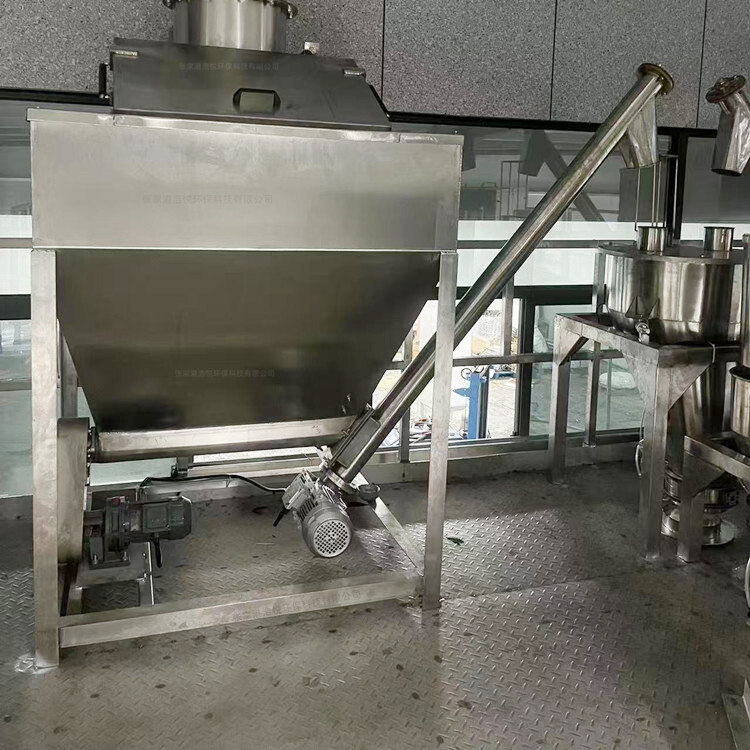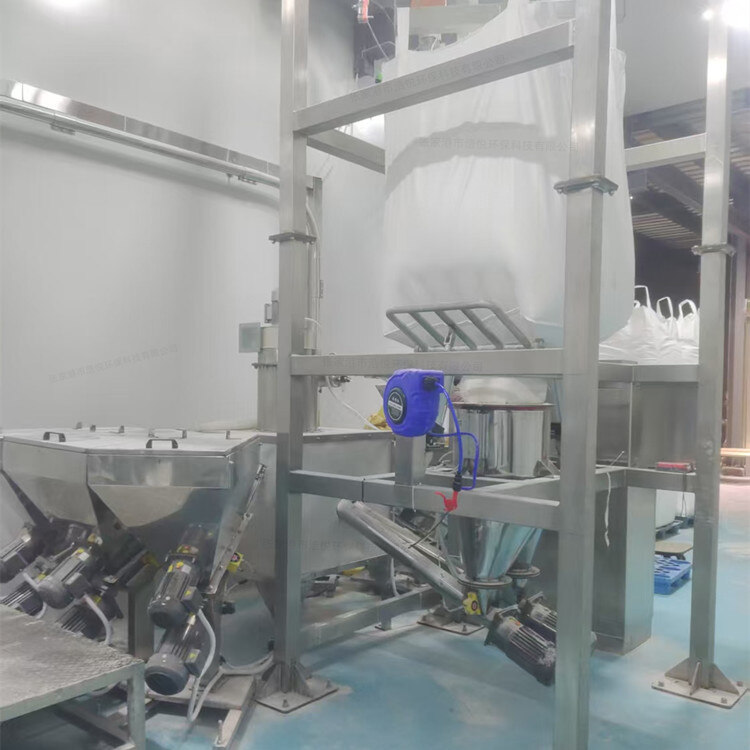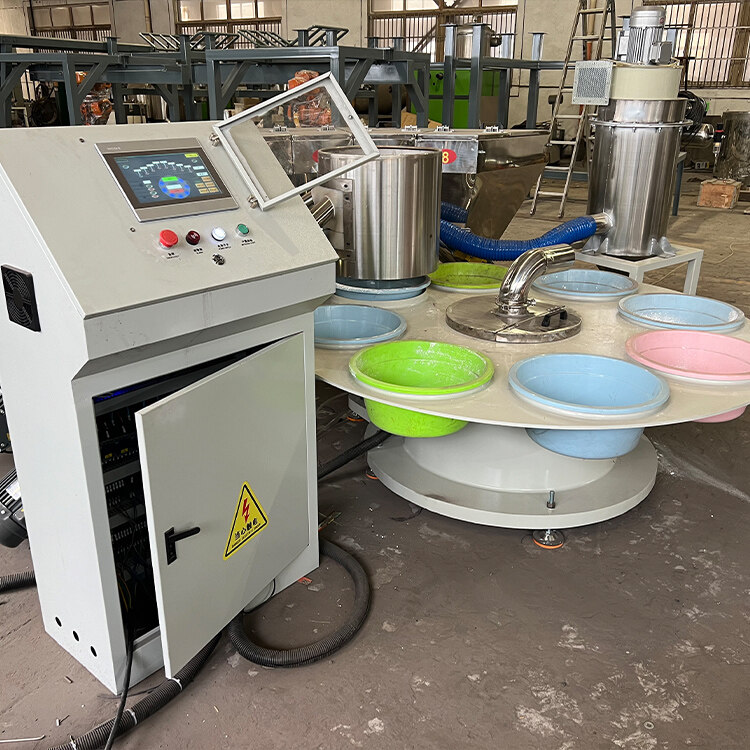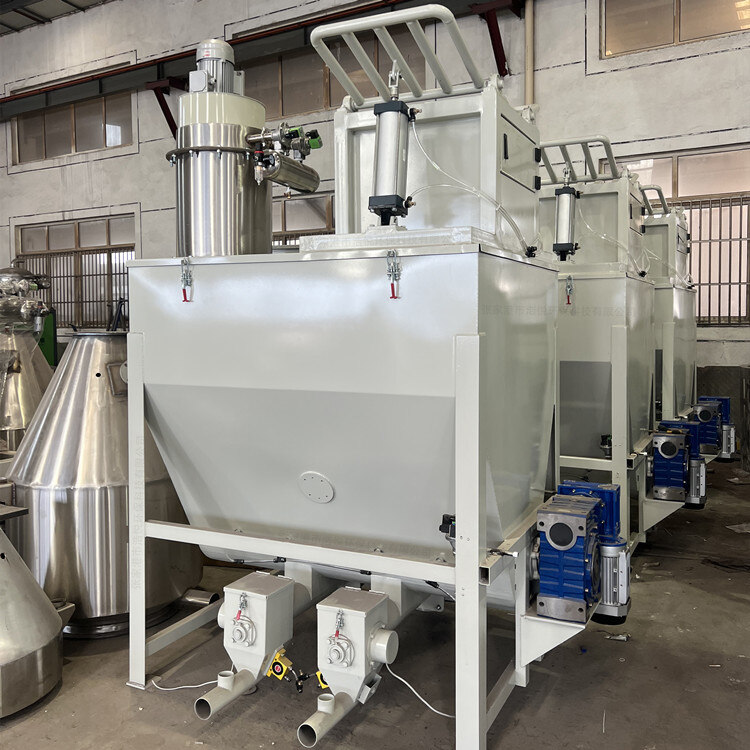- Introduction to automatic batching machine and fully automatic batching machine equipment
- The powder metering system tells you about the introduction of the mixing and drying machine
- 1000kg vacuum feeding machine
- Fully automatic small material batching system
- Research on Innovation of Automatic Weighing Machine Technology
- Design and operation of automatic batching system using PLC, industrial computer and frequency converter
Automatic batching system
- Category:Automatic metering and conveying equipment
- Hits:92次
- Release Date:2025-06-27
- Share:
- Inquiry
- Details
Driven by the wave of Industry 4.0 and intelligent manufacturing, automatic batching systems have become the core technological equipment to ensure product quality and improve production efficiency. From precise formula control of food and beverage, to automated proportioning of chemical raw materials, to large-scale mass production in the building materials industry, automatic ingredient systems have reshaped traditional production models with their high precision, stability, and intelligence.
1、 Definition and core functions of automatic batching system
The automatic batching system is a comprehensive automation system that automatically measures, proportions, and transports various materials based on preset formulas through the collaborative operation of sensors, controllers, actuators, and other components. Its core functions cover three aspects: precise measurement, ensuring that material ratio errors are controlled within ± 0.5%; Automated control enables unmanned operations throughout the entire process from material transportation, weighing to mixing; Data management, real-time recording and tracing of ingredient process data, providing a basis for production optimization.
2、 System architecture and working principle
(1) Hardware architecture analysis
The automatic batching system mainly consists of five core modules:
Material storage module: including silos, hoppers, and other containers, made of stainless steel, carbon steel lined with anti-corrosion materials based on material characteristics such as fluidity and corrosiveness. Some systems are equipped with level sensors to monitor material inventory in real time.
Conveyor unit: Common equipment includes screw conveyors, belt scales, pneumatic conveying devices, etc. For granular materials with good fluidity, belt scales are often used for continuous metering and conveying; For viscous powders, a screw conveyor is used in conjunction with weight loss metering.
Measurement module: The core components are weighing sensors (with an accuracy of up to 0.05% FS) and flow sensors (such as electromagnetic flow meters and mass flow meters). Weighing measurement is achieved through static or dynamic weighing methods. Dynamic weighing is suitable for continuous production scenarios, while static weighing is used for batch batching.
Control system: With PLC (Programmable Logic Controller) or DCS (Distributed Control System) as the core, it receives sensor data, performs calculations based on preset formulas, and controls the actions of the executing mechanism. High end systems can integrate AI algorithms to achieve adaptive proportioning adjustment.
Mixing unit: including mixers, mixers, and other equipment to ensure a material mixing uniformity of ≥ 98%. Some systems are equipped with temperature and humidity monitoring functions to optimize mixing process parameters.
(2) Software system functions
Formula management: supports multiple formula storage (up to 1000 sets), quickly switches production tasks, and meets diverse product needs.
Real time monitoring: Through HMI (Human Machine Interface) or SCADA system, real-time display of material flow, weight, equipment operation status and other parameters.
Alarm mechanism: Set up functions such as out of tolerance alarm (triggered when material ratio deviation>1%), material blockage alarm, equipment failure alarm, etc., to ensure production safety.
Data analysis: Automatically generate production reports, collect data on material consumption, equipment efficiency, etc., support integration with MES systems, and achieve digital management of the entire production process.
3、 Typical application scenarios and technical solutions
(1) Food and beverage industry
In the production of baked goods, the automatic ingredient system uses weight loss measurement technology to accurately control the ratio of raw materials such as flour, sugar, and oil. The system adopted by a well-known biscuit company can achieve synchronous measurement of 20 materials, shorten the single batch ingredient time to 3 minutes, achieve ingredient accuracy of ± 0.3%, and significantly improve product taste consistency.
(2) Chemical industry
In the production of positive electrode materials for lithium batteries, automatic batching systems need to meet high cleanliness and explosion-proof requirements. Adopting a fully enclosed conveying and weight loss weighing scheme, combined with nitrogen protection, to prevent material oxidation and achieve precise proportioning of raw materials such as lithium iron phosphate and graphite, ensuring the stability of battery performance.
(3) Building materials industry
The automatic batching system of the concrete mixing plant adopts dynamic weighing technology, continuously measuring sand and gravel aggregates through a belt scale, measuring cement and fly ash through a spiral scale, and cooperating with a mixer to achieve rapid production of C20-C80 different grades of concrete, with an hourly production capacity of up to 240 cubic meters.
4、 Core technological advantages and industry value
Quality assurance: Compared to manual batching, automatic systems can reduce product quality fluctuations between batches by 80% and improve customer satisfaction.
Efficiency improvement: Automated operations reduce manual intervention, shorten production cycles by an average of 30%, and increase equipment utilization to over 90%.
Cost control: By precise measurement, the material loss rate is reduced by 15% -20%; Simultaneously reducing labor and management costs.
Safety and environmental protection: The fully enclosed system reduces dust emissions, and the explosion-proof and leak proof designs comply with safety production standards.
5、 Technological development trends and innovation directions
Intelligent upgrade: Introducing AI algorithms to achieve adaptive ingredients, optimizing formula parameters through machine learning; Integrated machine vision technology, real-time detection of material status, automatic correction of proportioning.
Flexible production: Modular design supports quick switching of production tasks, meeting customized needs for small batches and multiple varieties.
Green and energy-saving: adopting energy-saving conveying equipment, optimizing control strategies to reduce energy consumption; Develop material recycling and reuse functions to reduce waste.
Digital twin technology: Build a virtual ingredient system, simulate the production process, optimize process parameters in advance, and reduce debugging costs and risks.
The automatic batching system is accelerating its evolution from traditional automation to intelligent and digital direction, constantly breaking through the bottleneck of accuracy and efficiency through technological innovation. When selecting and applying the system, it is necessary to combine industry characteristics, production scale, and process requirements to develop customized solutions, fully unleash its technological value, and promote high-quality development of the enterprise.






